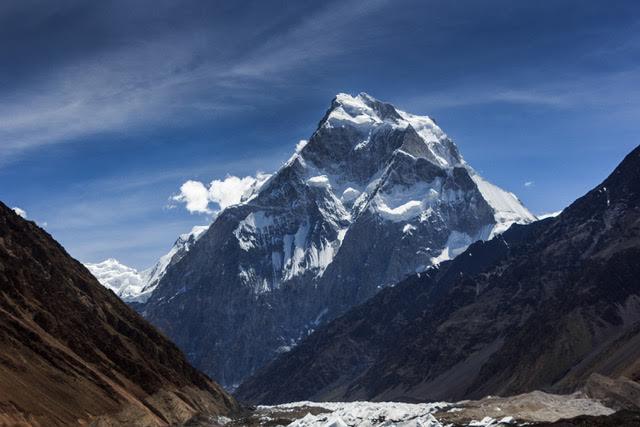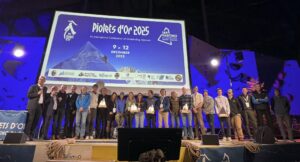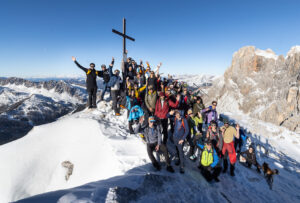Chris Wright, Michael Hutchins, and Stefano Ragazzo are leaving tomorrow for one of the most exciting expeditions of the year: an attempt on an unclimbed monster wall 3,000m high in an isolated region of the Karakoram. They will climb in alpine style and have very little information about what they will find.
Only last week, the team still thought they were going to India as planned.
“I was talking with Chris [Wright] yesterday and we realized that we will finally relax when we find ourselves flying to Pakistan,” Stefano Ragazzo told ExplorersWeb from Chamonix, where he (and Wright) work as guides. “The hardest part of the expedition will be done, and everything else will be doing what we like.”
Tomorrow, Wright (UK/U.S.) and Ragazzo (Italy) board a plane to Istanbul, where they will meet Michael Hutchins of the U.S. and fly together to Islamabad.
The three men received a $6,000 Cutting Edge Grant from the American Alpine Club for an expedition to the southwest face of Rimo III. They also received support from the Italian Alpine Club and the Mount Everest Foundation.
They applied for climbing permits in January, well ahead of time, but the border conflict between India and Pakistan sank their original plan.
“We had been waiting in vain for a green light from the Indian authorities for months,” Ragazzo explained. “As the weeks went by, we started looking for a plan B, while keeping the original goal as our first option, until we simply couldn’t wait anymore. We changed our goals and plane tickets on Monday.”
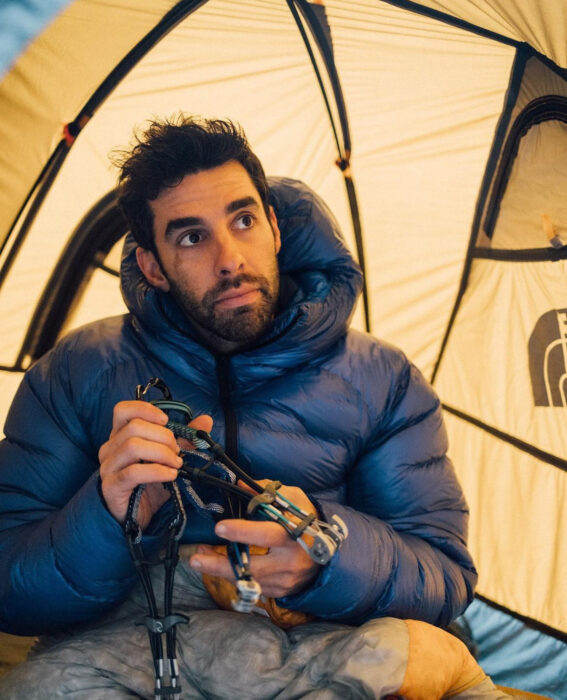
Stefano Ragazzo on a previous expedition. Photo: Mattia Carraro
The goal
They are now heading to the north face of Yukshin Gardan Sar (7,530m). This unclimbed face is twice as large as the one on Rimo III.
“The peak has three previous ascents, up the easiest ridge, but there are no attempts on any other side of the peak,” explained Ragazzo. “Our plan is to climb a new line up the north face and the north ridge. We estimate we will need five or six days on the wall to reach the summit, and two more for the descent, climbing in alpine style.”

Location of Yukshin Gardan Sar. Google Maps
He admitted that they have very little information about the face and the area, except for some pictures shot by a science expedition in 2015. Called the Karakoram Anomaly Project, it studied why glacial lakes sometimes burst catastrophically and how to prevent this.
The climbers also consulted mountain geography expert Rodolphe Popier. He replied with a picture and a note that read: “Monster NE Face, over 3,000 vertical meters!”
“We need to get there and start climbing to properly assess the conditions and ponder our options, because no one has been on the line we want to climb,” said Ragazzo.
The team will acclimatize elsewhere on the peak, which may help them evaluate from a distance the conditions on the face.
Exploration mode
The entire expedition has a strong exploratory component. They will have to set base camp pretty low down, at around 3,600m on a moraine, and the proper climb starts at around 4,400m and eight kilometers away from base camp, said Ragazzo.
“It is a huge climb, so we need to study it well and acclimatize as close to it as possible,” he said.
Ragazzo explained that the lower part of the face will probably not be so difficult, and the crux will be in the middle of the headwall, on mixed terrain.
“We might acclimatize on the lower part of the mountain and then leave the headwall for the definitive push,” he added.
Asked why they aren’t acclimatizing on a secondary peak nearby, to keep to the strictest conditions of alpine style, Ragazzo noted there were no interesting peaks between their base camp and the foot of Yukshin Gardan Sar. He also said they had no time to consider a lesser peak, given their already hectic last-minute change of plan.
First-time team
The three members of the expedition have not yet climbed together, but Chris Wright is the joint connecting the other two.
“Chris and I regularly climb together…[in] Chamonix,” said Ragazzo, “and he knows Michael from an expedition to India they did last year.” He is referring to an attempt on Chiling II in Zanskar.
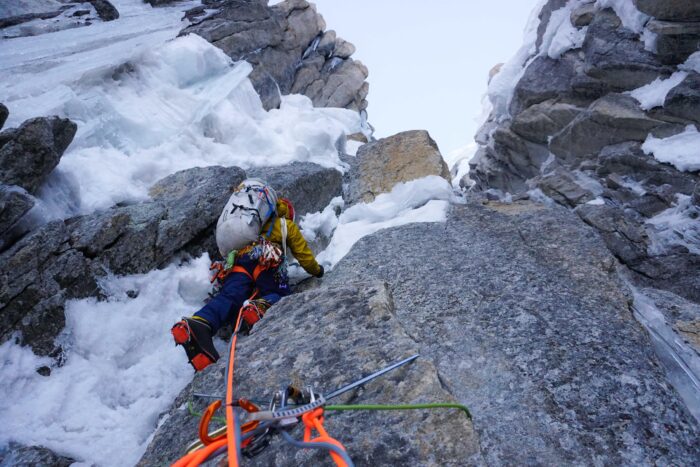
Chris Wright on Link Sar. Photo: Graham Zimmermann
Yet Ragazzo is confident they will make a good team because each has different skills and excels in something.
Stefano Ragazzo recently rope-soloed Eternal Flame on Nameless Tower in Pakistan and completed the Nose on El Capitan in the same style. Wright received the Piolet d’Or in 2020 for his team’s ascent of Link Sar, and Hutchins has climbed six of the seven major peaks in the Fitz Roy massif.
“This kind of expedition involves a lot of mental strain, caused by the unknown terrain, the altitude, and the conditions,” explained Ragazzo. “What I have experienced on previous expeditions will help for sure.”
Ragazzo pointed out that the financial support through grants has really helped their preparation. “[It] allows us to devote more time to specific training and a bit less work as guides,” he said. “Of course, guiding and specific training are complementary, but combining the two of them can be exhausting.”
Climbing history of Yukshin Gardan Sar
Yukshin Gardar Sar lies in the Shimshal Valley of Pakistan’s Karakoram. Its altitude varies with the source but ranges from 7,460m to 7,600m. Its most widely accepted altitude is 7,530m.
As Ragazzo pointed out, it has been climbed three times, all via the south ridge. An Austrian-Pakistani team led by Rudolf Wurzer made the first ascent on June 26, 1984. They approached from the Yazghil Glacier, camping on the west side, and climbed the south ridge in classic Himalayan style, setting camps along the route, according to their report in the American Alpine Journal (AAJ).
That first ascent was a race between them and a Japanese team from Tokyo University led by Kenshiro Otaki. The Japanese tried to find a line up the north face and failed.
“After a month’s effort, we gave up because of vertical and brittle rock,” member Akira Suzuki reported in the AAJ.
In the end, they switched to the south ridge. When they summited, they found the flags left by the previous team. However, the Japanese climbed the ridge in alpine style.
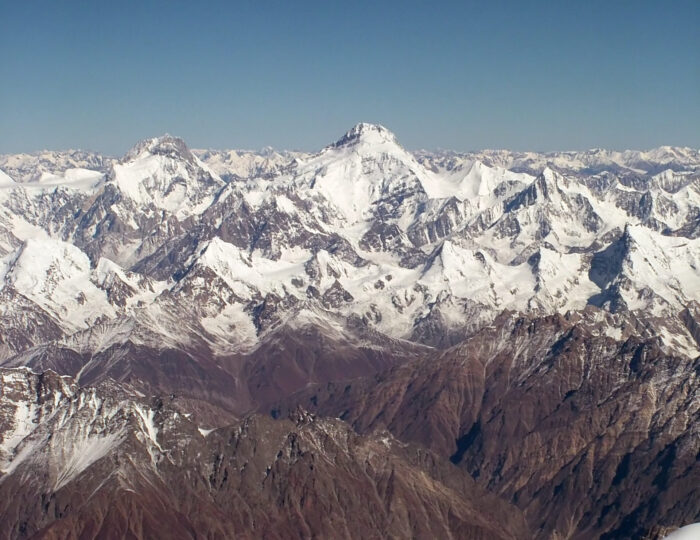
Yukshin Gardan Sar, left, and the slightly higher Kanjut Sar. Photo: Rupert Pupkin/Wikipedia
According to the British Alpine Club’s Himalayan Index, Alejandro Arranz, Inaki Aldaya, Alfredo Zabalza, and Tomas Miguel of Spain made the third and latest ascent in 1986. Their descent was dramatic. They struggled down for two days in bad weather, and all suffered frostbite.
